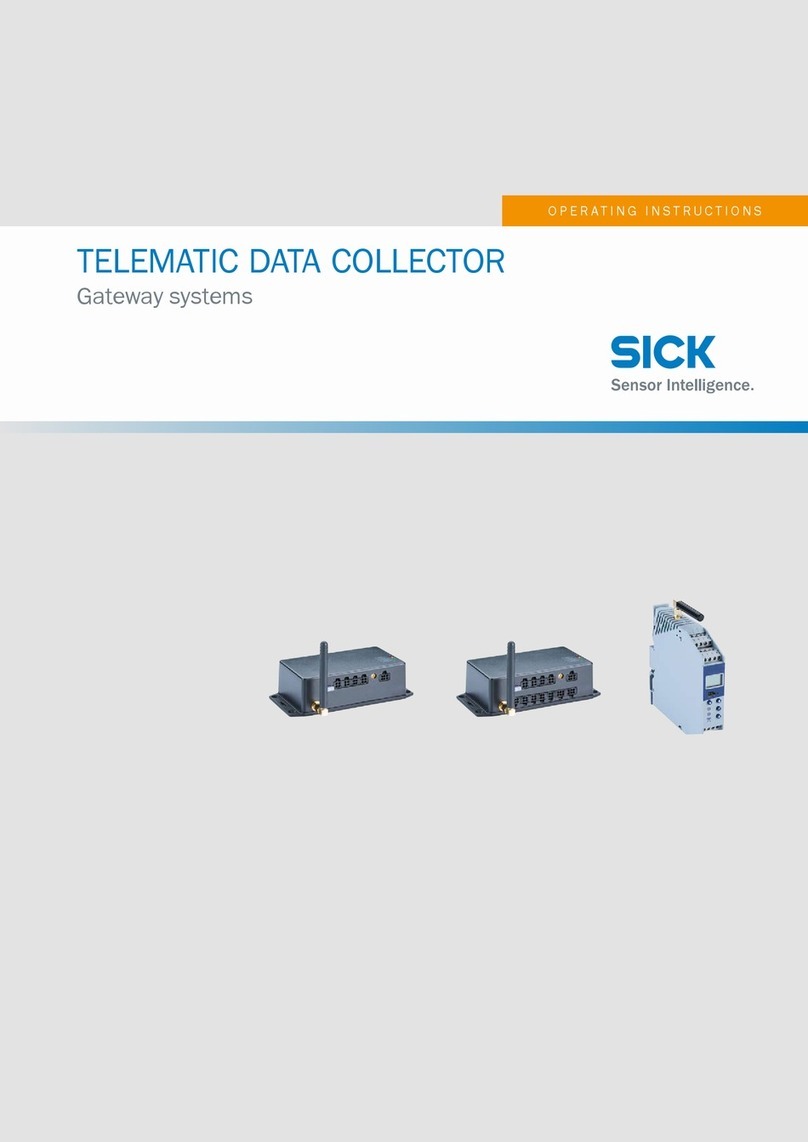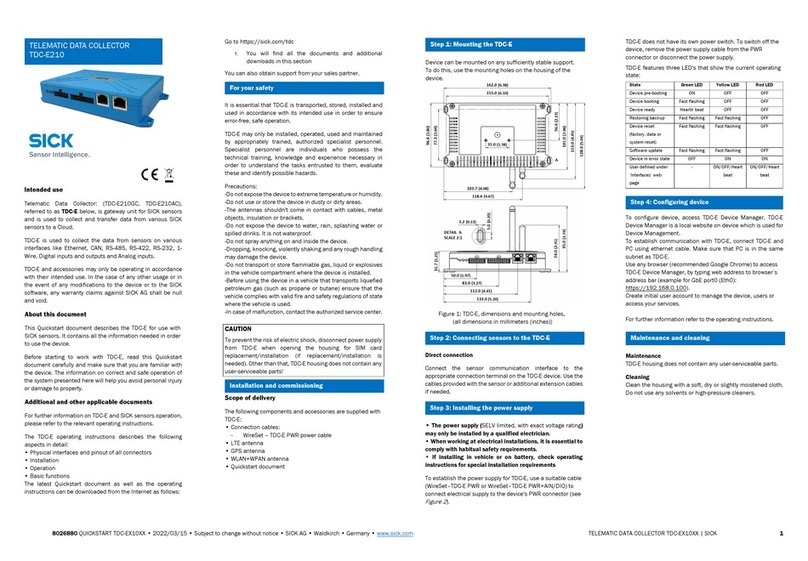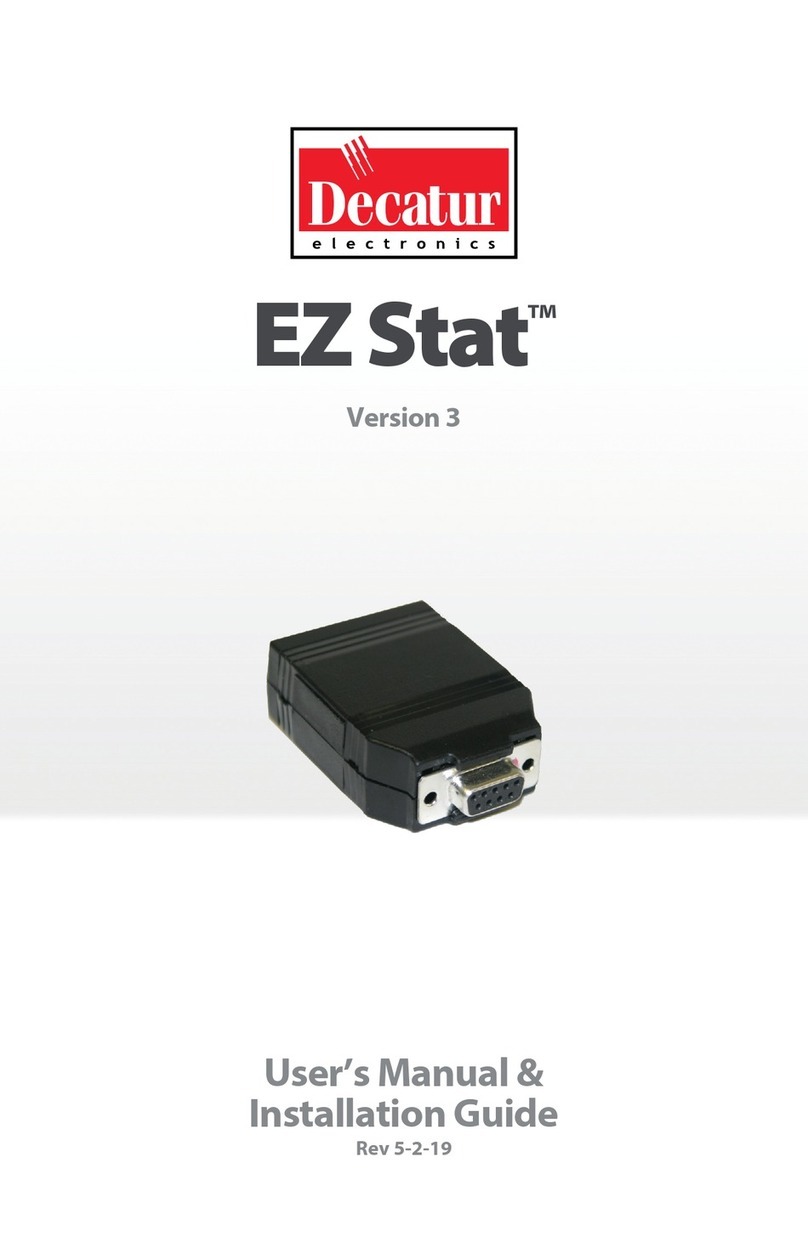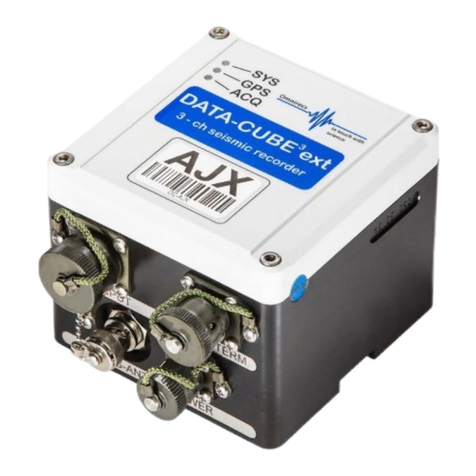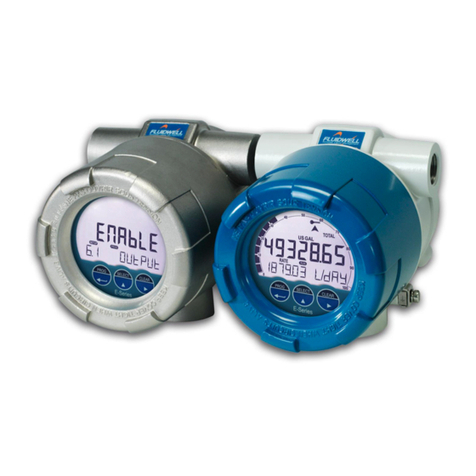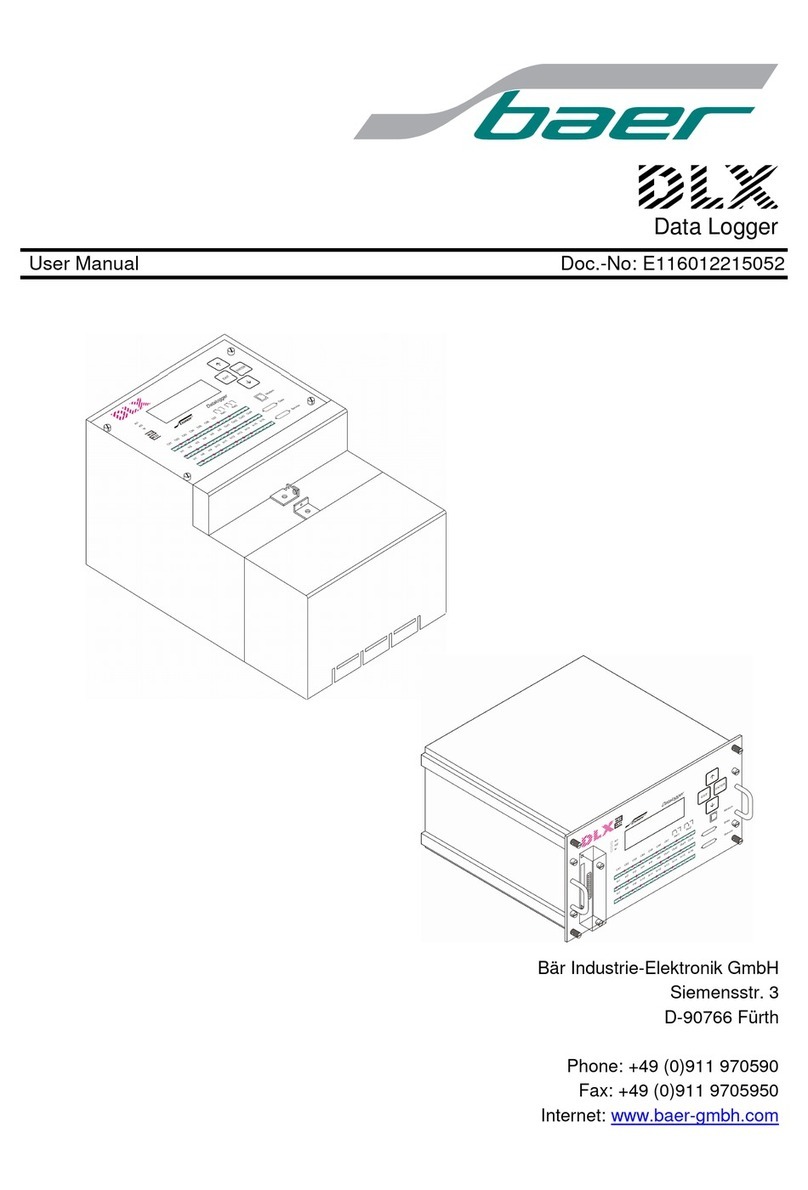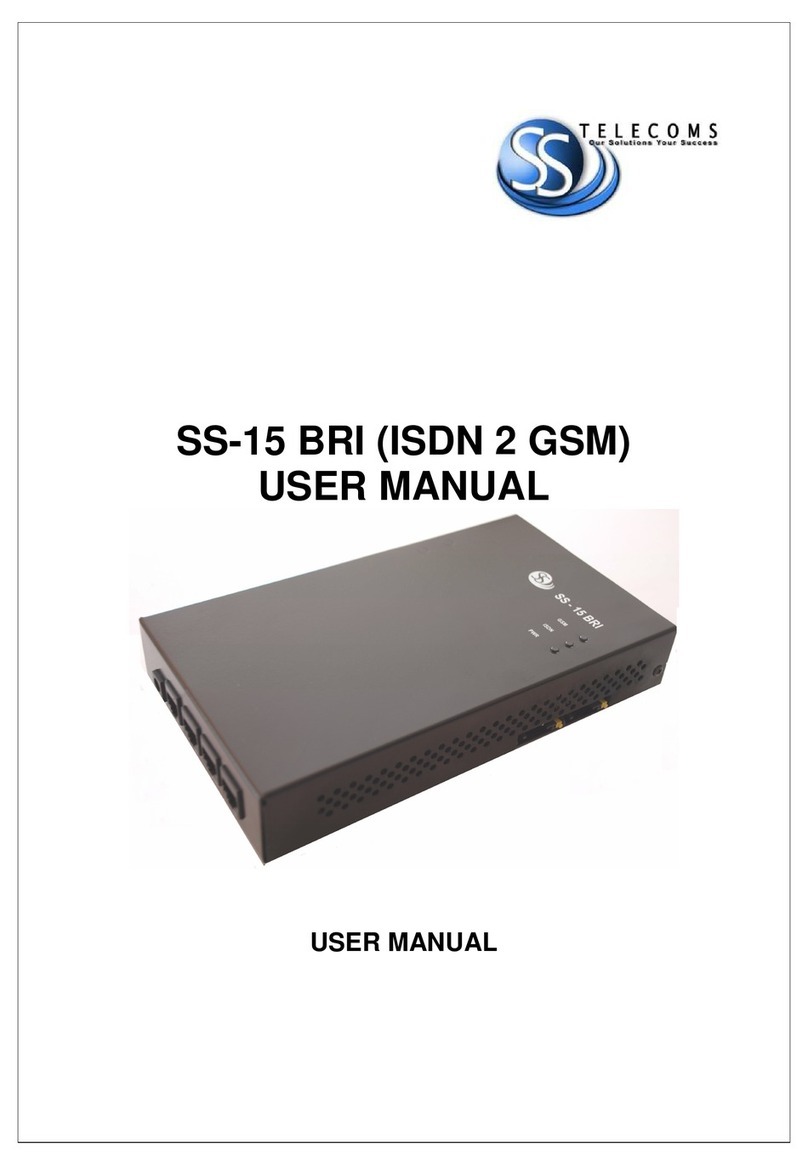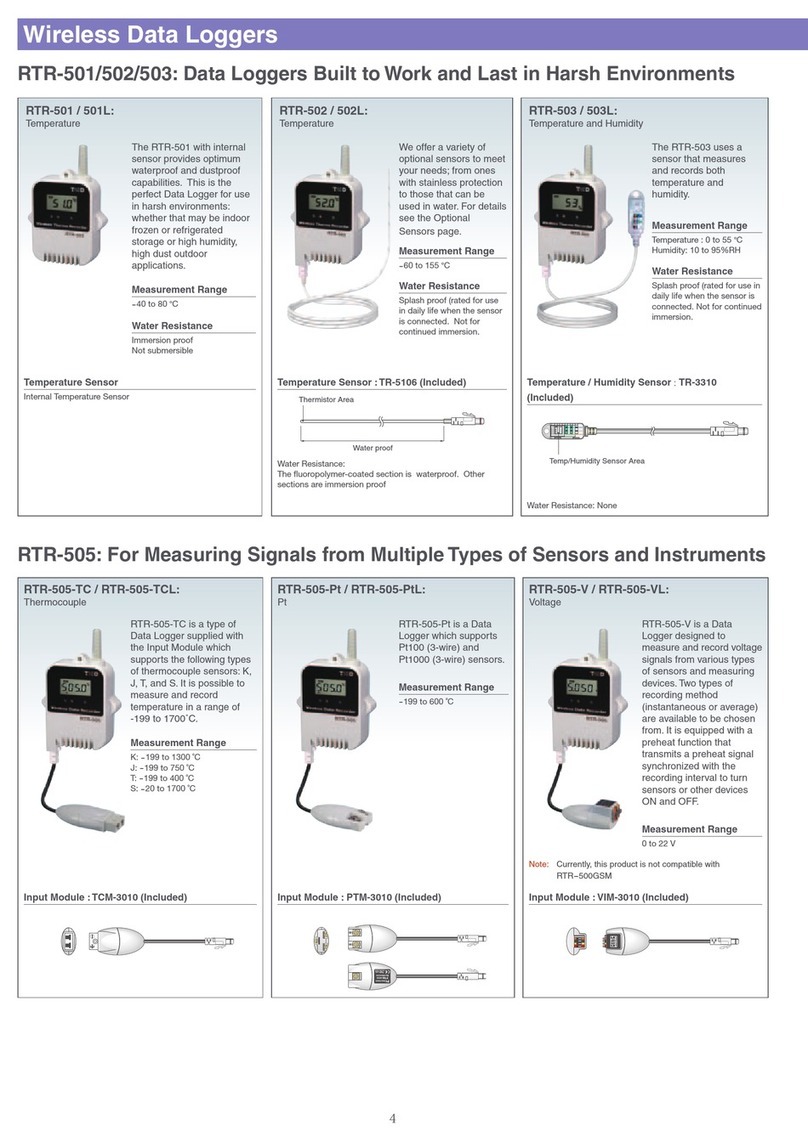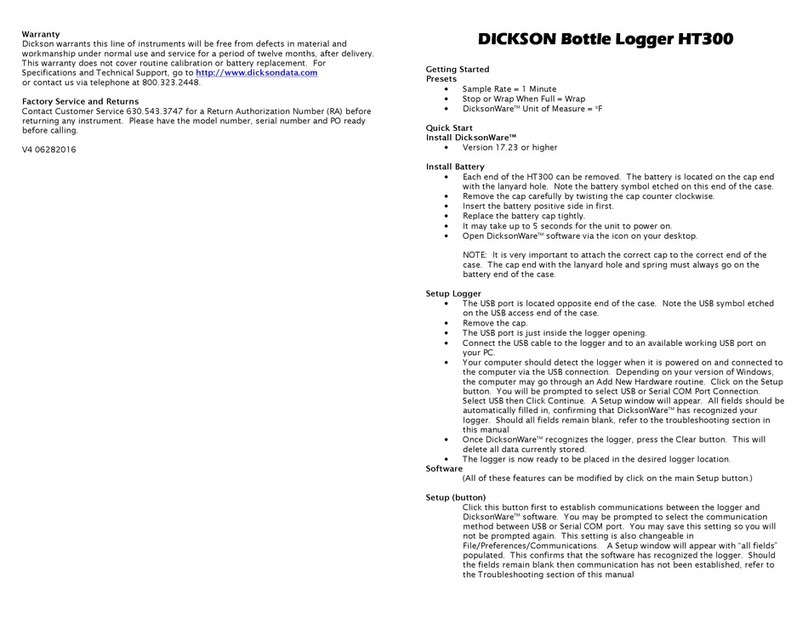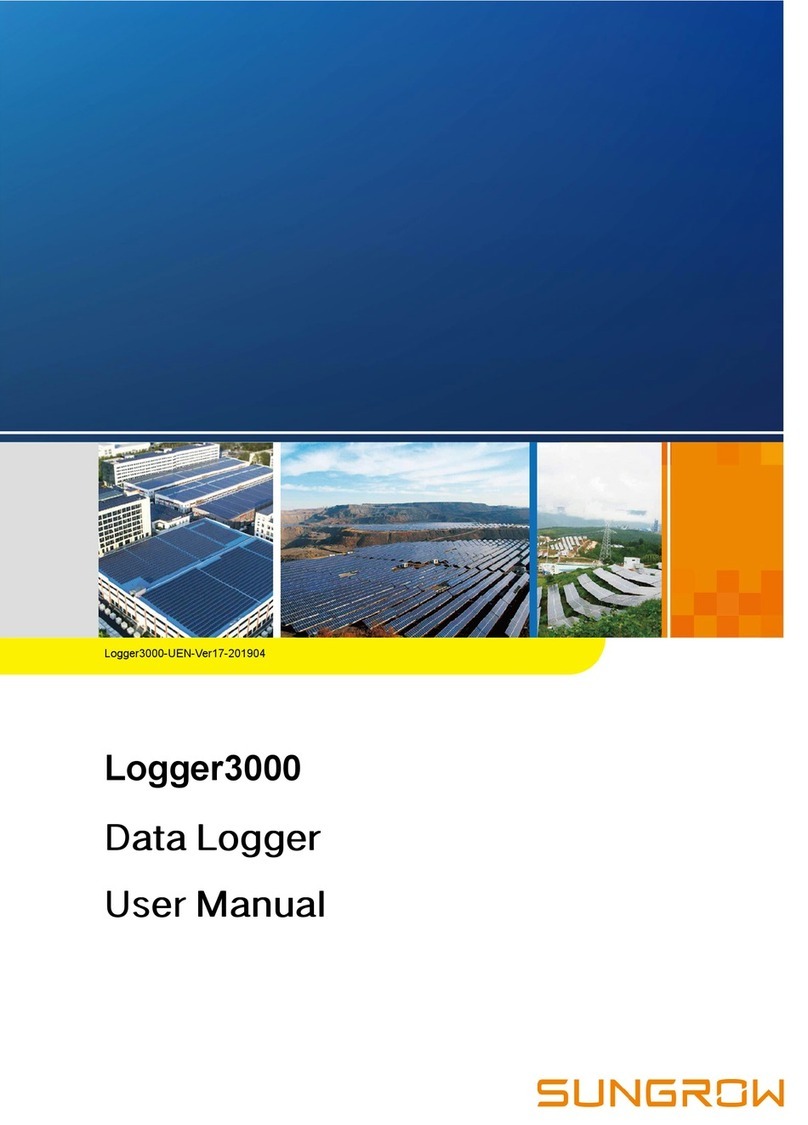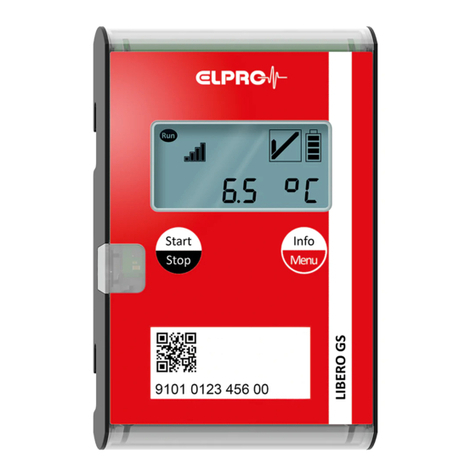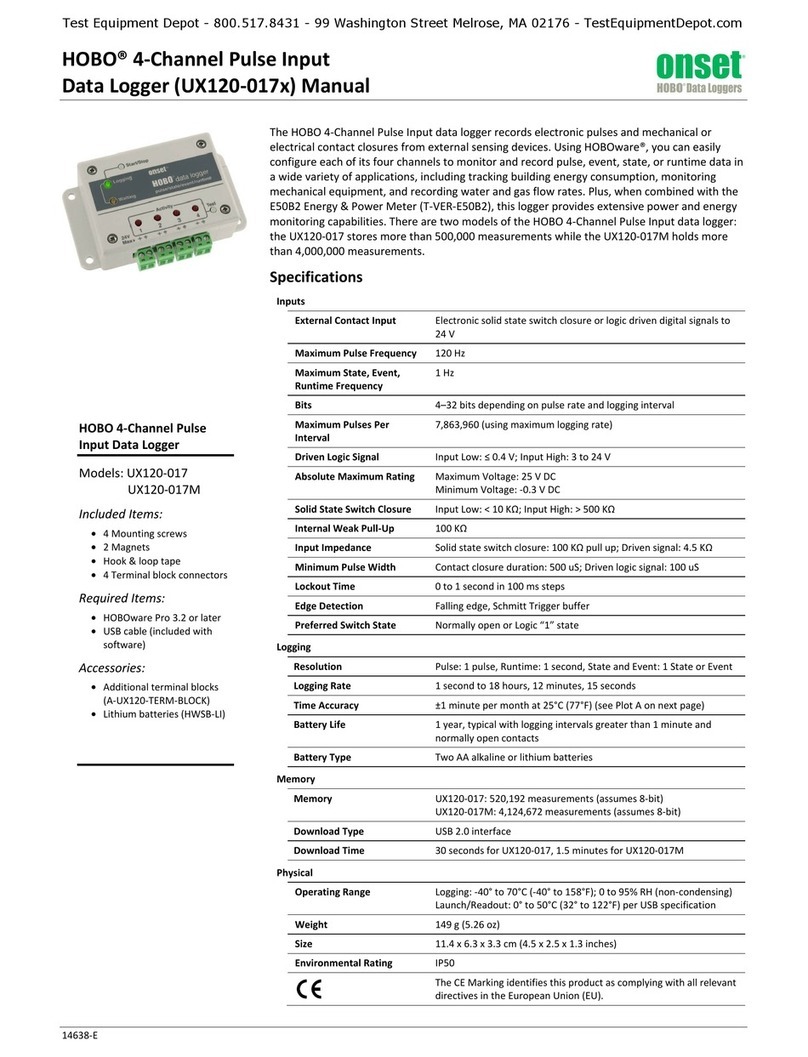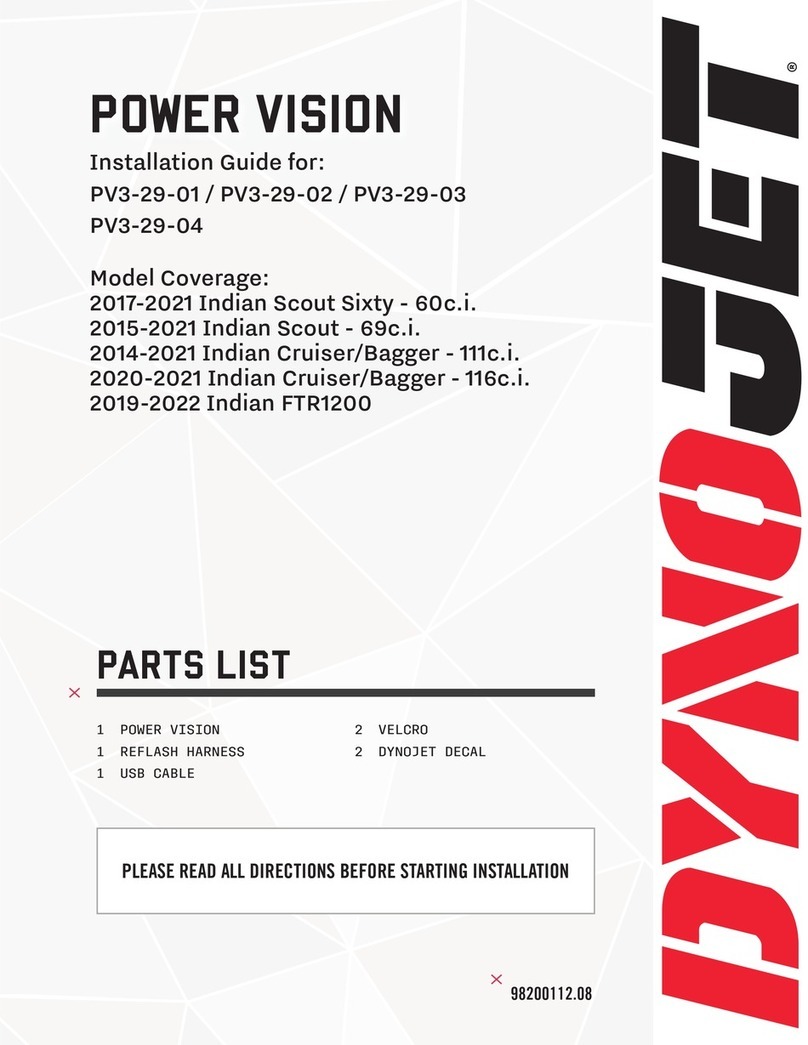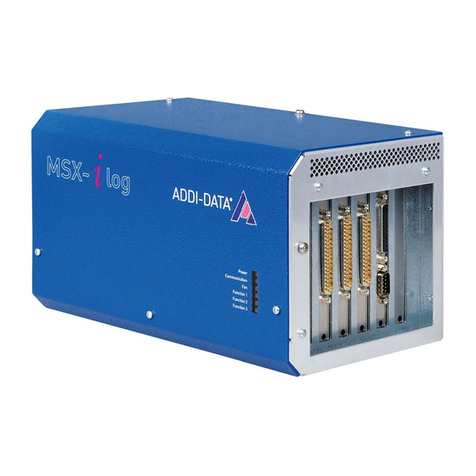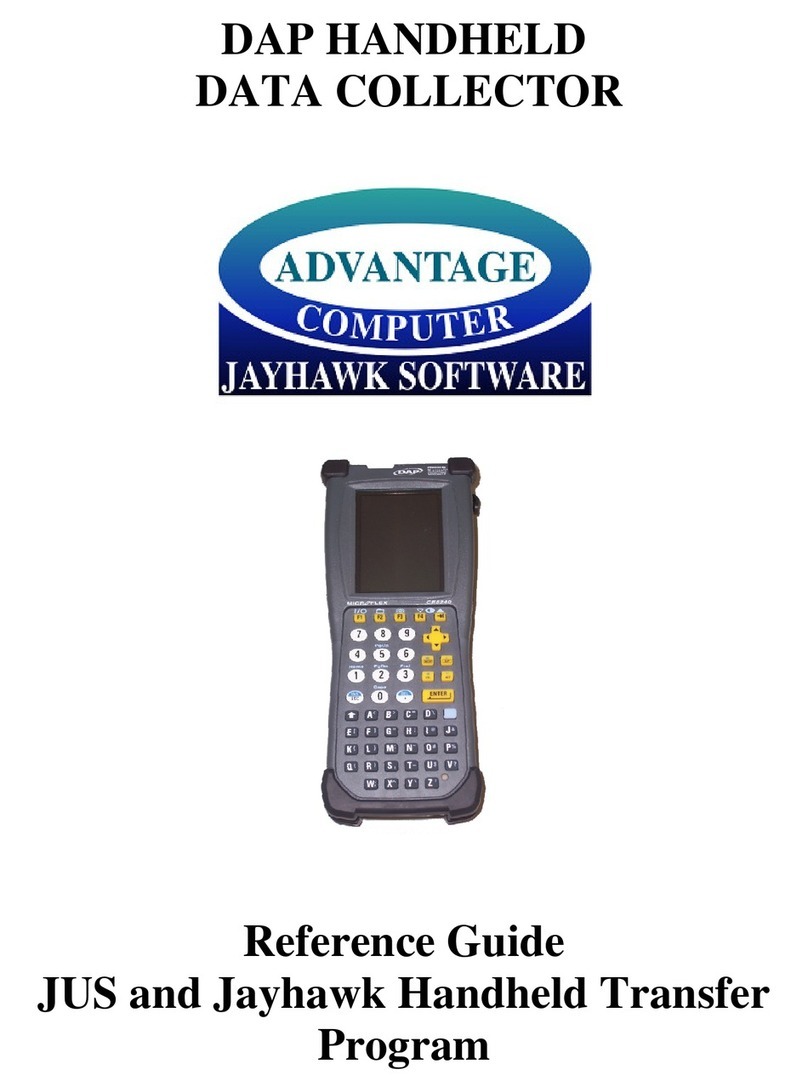SICK TIC102 master User manual

OPERATING INSTRUCTIONS
TRAFFIC INFORMATION COLLECTOR
Proling systems

2
8017768/12AX/2019-05-31|SICK
OPERATING INSTRUCTIONS | TIC
Subject to change without notice
Product described
Product name: Traffic Information Collector
Document identification
Title: Traffic Information Collector Operating Instructions
Part number: 8017768/12AX
Version: 2019-05-31
Manufacturer
SICK AG
Erwin-Sick-Str. 1 · 79183 Waldkirch · Germany
Trademarks
IBM is a trademark of the International Business Machine Corporation.
MS-DOS is a trademark of the Microsoft Corporation.
Windows is a trademark of the Microsoft Corporation.
Other product names in this document may also be trademarks and are
only used here for identification purposes.
Original documents
The German version 8017638/12AX of this document is an original
SICK AG document.
SICK AG does not assume liability for the correctness of any unauthorized
translation.
In case of doubt, contact SICK AG or your local agency.
Legal notes
Subject to change without notice
© SICK AG. All rights reserved

CONTENTS
3
8017768/12AX/2019-05-31|SICK
Subject to change without notice
OPERATING INSTRUCTIONS | TIC
Contents
1About these operating instructions................................................................................7
1.1 Described software versions ...............................................................................7
1.2 Purpose of this document....................................................................................7
1.3 Target group .........................................................................................................7
1.4 Information depth ................................................................................................8
1.5 Abbreviations used...............................................................................................8
1.6 Symbols used .......................................................................................................9
2On safety......................................................................................................................... 10
2.1 Qualified safety personnel................................................................................ 10
2.2 Applications of the system................................................................................ 10
2.3 Intended use...................................................................................................... 11
2.4 General safety notes and protective measures .............................................. 12
2.4.1 Safety notes and icons ...................................................................... 12
2.4.2 General safety notes.......................................................................... 13
2.4.3 Potential hazardous points................................................................ 14
2.5 Protecting the environment .............................................................................. 16
3System description ........................................................................................................ 17
3.1 System functions of the TIC product family ..................................................... 17
3.2 System components and scope of delivery ..................................................... 19
3.2.1 Components of the TIC102 system function.................................... 19
3.2.2 Components of the TIC502 system function.................................... 21
3.2.3 Components of the TIC501 system function.................................... 23
3.2.4 Components of the axle counting system function.......................... 24
3.2.5 Traffic Controller FPS as OEM variant............................................... 25
3.3 The measurement site ...................................................................................... 27
3.3.1 Typical layout of the measurement site............................................ 27
3.3.2 Measurement site for TIC102 ........................................................... 28
3.3.3 Measurement site for TIC502 ........................................................... 29
3.3.4 Measurement site for TIC501 ........................................................... 30
3.3.5 Measurement site for additional axle counting................................ 31
3.4 System operating principle ............................................................................... 32
3.4.1 Operating principle of vehicle detection ........................................... 32
3.4.2 Operating principle of the vehicle classification .............................. 34
3.4.3 Operating principle of the function for calculating the vehicle
dimensions ......................................................................................... 36
3.4.4 Operating principle of the vehicle axle counting function ............... 36
3.4.5 Emission of object location messages.............................................. 38
3.4.6 Data processing in the Traffic Controller .......................................... 40
3.4.7 Output data ........................................................................................ 41
3.5 System interfaces.............................................................................................. 42
3.5.1 Integration into existing IT infrastructure ......................................... 43
3.5.2 Site view in TEMS Manager ............................................................... 44
3.5.3 Plug-ins for saving and downloading the vehicle data..................... 45
3.5.4 Downloading log files......................................................................... 47
3.6 Project planning ................................................................................................ 48
3.6.1 General system requirements ........................................................... 48
3.6.2 Requirements for vehicles................................................................. 48
3.6.3 General requirements at the measurement site.............................. 49

CONTENTS
4
8017768/12AX/2019-05-31|SICK
OPERATING INSTRUCTIONS | TIC
Subject to change without notice
3.6.4 Requirements for mounting the vehicle detection
components ........................................................................................51
3.6.5 Requirements for mounting the axle counting components............55
3.7 Status indicators ................................................................................................59
3.7.1 TIC102 status indicators ....................................................................59
3.7.2 TIC502 / TIC501 status indicators ....................................................60
3.7.3 Status indicators and controls on the Traffic Controller...................60
4Mounting .........................................................................................................................61
4.1 General advice ...................................................................................................61
4.2 Mounting 2D LiDAR sensors .............................................................................62
4.2.1 Mounting the TIC102..........................................................................62
4.2.2 Mounting the TIC502..........................................................................65
4.2.3 Mounting the TIC501..........................................................................67
4.2.4 Mounting the LMS Axle.......................................................................68
4.3 Mounting the Traffic Controller .........................................................................73
4.4 Mounting the Ethernet switch ...........................................................................73
5Electrical installation.....................................................................................................74
5.1 General advice ...................................................................................................74
5.2 Connections .......................................................................................................74
5.2.1 TIC102 connections............................................................................74
5.2.2 Connections to LMS511 2D LiDAR sensor .......................................75
5.2.3 Connections on the Traffic Controller ................................................76
5.3 Electrical installation of the TIC102..................................................................77
5.3.1 Connecting the TIC102 to the voltage supply ...................................77
5.3.2 Connecting TIC102 units to one another via Ethernet .....................78
5.3.3 Connect TIC102 Master to the customer interface ..........................79
5.3.4 SICK connecting cables for TIC102 ...................................................80
5.4 TIC502 / TIC501 electrical installation ............................................................81
5.4.1 Traffic Controller connection..............................................................83
5.4.2 2D LiDAR sensor connection .............................................................84
5.4.3 Connecting to the customer interface ...............................................85
5.5 Ethernet switch connection to the power supply .............................................86
5.6 Electrical installation of the LMS Axle...............................................................86
5.6.1 Connecting the LMS Axle to the TIC102............................................86
5.6.2 Connecting the LMS Axle to the TIC502............................................87
5.7 SICK connecting cables for 2D LiDAR sensors ................................................88
6Commissioning ...............................................................................................................89
6.1 Starting the profiling system .............................................................................89
6.2 Connecting to TEMS Manager...........................................................................89
6.3 Configuring the IP address of the Traffic Controller
(= customer interface) .......................................................................................90
6.4 Setting up the site configuration with the wizard.............................................93
6.4.1 Selecting system functions ................................................................94
6.4.2 Selecting axle counting ......................................................................95
6.4.3 Selecting a region ...............................................................................96
6.4.4 Defining the classification system .....................................................96
6.4.5 Completing site configuration ............................................................97
6.5 Working in TEMS Manager ................................................................................98
6.5.1 The user interface...............................................................................98
6.5.2 Displaying the measurement site ................................................... 101

CONTENTS
5
8017768/12AX/2019-05-31|SICK
Subject to change without notice
OPERATING INSTRUCTIONS | TIC
6.6 Adapting system functions to the measurement site ...................................104
6.6.1 Configuring the measurement site .................................................104
6.6.2 Configuring system functions for vehicle detection .......................107
6.6.3 Configuring system functions for axle counting ............................. 115
6.6.4 Working in expert mode................................................................... 120
6.6.5Displaying the system parameters and system status..................121
6.6.6 Displaying system functions for vehicle classification................... 122
6.6.7 Working with the Axle Overruler ......................................................123
6.6.8 Configuring plug-ins .........................................................................124
6.7 Running the configuration ..............................................................................128
6.7.1 Checking operational readiness......................................................129
6.7.2 Displaying measurement points .....................................................131
6.7.3 Displaying the device status............................................................ 132
6.7.4 Switching back to editing mode ......................................................132
6.7.5 Saving the configuration on the hard drive ....................................133
6.8 Checking that measuring mode is working properly ..................................... 134
6.8.1 Displaying vehicles with measured values .....................................134
6.8.2 Saving vehicle data ..........................................................................136
6.8.3 Accessing detailed information about a vehicle ............................136
6.9 Downloading log files ......................................................................................145
6.10 Updating the TEMS Recorder and packages .................................................148
6.10.1 Displaying information on the TEMS Recorder...............................148
6.10.2 Updating the TEMS Recorder ..........................................................149
6.10.3 Updating packages ..........................................................................150
6.11 Using the TEMS Info interface ........................................................................ 151
6.12 Installing the security certificate for the HTTPS connection .........................153
6.12.1 Uploading the supplied HTTPS certificate ......................................153
6.12.2 Uploading your own HTTPS certificate ............................................ 155
6.13 Extending site .................................................................................................. 156
6.13.1 Adding system component ..............................................................156
6.13.2 Using a configuration file to load system parameters ...................158
7Maintenance ................................................................................................................159
7.1 Overview of maintenance tasks .....................................................................159
7.2 Maintenance during operation .......................................................................160
7.2.1 Visual inspection .............................................................................. 160
7.2.2 Cleaning the 2D LiDAR sensors ......................................................161
7.3 Replacing components ...................................................................................162
7.3.1 Which system components can be exchanged? ............................162
7.3.2 Replace the TIC102 .........................................................................163
7.3.3 Completely replacing the TIC502....................................................163
7.3.4 Replacing LMS511 2D LiDAR sensor ............................................. 164
7.3.5 Replacing the Traffic Controller....................................................... 164
7.3.6 Updating the measurement site .....................................................165
8Fault diagnosis ............................................................................................................ 169
8.1 SICK Support ................................................................................................... 169
8.2 Fault indicators at component level............................................................... 170
8.2.1 Fault indicator for the 2D LiDAR sensors .......................................170
8.2.2 Traffic Controller fault indicators..................................................... 171
8.3 Fault indicators at system level...................................................................... 171
8.3.1 Fault diagnosis in TEMS Manager................................................... 172
8.3.2 Fault diagnosis via the TEMS Info interface ...................................177

CONTENTS
6
8017768/12AX/2019-05-31|SICK
OPERATING INSTRUCTIONS | TIC
Subject to change without notice
8.3.3 Detecting system errors using log files........................................... 177
8.3.4 Providing raw data to help Support ................................................ 177
8.3.5 Sensor component failures ............................................................. 179
8.4 Typical fault situations.................................................................................... 180
9Annex ............................................................................................................................ 183
9.1 Technical data................................................................................................. 183
9.1.1 TIC102 data sheet ........................................................................... 183
9.1.2 TIC502 data sheet ........................................................................... 184
9.1.3 TIC501 data sheet ........................................................................... 185
9.1.4 Excerpt from the LMS511 SE data sheet....................................... 185
9.1.5 Excerpt from the Traffic Controller TIC data sheet......................... 186
9.2 Dimensional drawings .................................................................................... 187
9.2.1 Dimensional drawings for the TIC102 ............................................ 187
9.2.2 Dimensional drawings for the TIC502 ............................................ 188
9.2.3 Dimensional drawings for LMS511 SE 2D LiDAR sensor.............. 189
9.2.4 Traffic Controller dimensional drawings......................................... 192
9.3 Category systems............................................................................................ 193
9.3.1 European region .............................................................................. 193
9.3.2 North American region .................................................................... 196
9.3.3Brief overview of grouped category systems.................................. 198
9.4 Terminology relating to statistical measurement accuracy.......................... 199
9.5 Users and authorizations................................................................................ 200
9.5.1 Overview ........................................................................................... 200
9.5.2 Changing default passwords........................................................... 201
9.5.3 Creating users .................................................................................. 202
9.5.4 Change password ............................................................................ 203
9.5.5 User data for accessing the FTP server of the Traffic
Controller.......................................................................................... 203
9.6 TEMS Manager Command Line Tool.............................................................. 204
9.6.1 Introduction...................................................................................... 204
9.6.2 Usage from Windows Command Line............................................. 205
9.6.3 Usage from Powershell.................................................................... 206
9.6.4Command Specification .................................................................. 207
10 Disposal ........................................................................................................................ 215

ABOUT THESE OPERATING INSTRUCTIONS 1
7
8017768/12AX/2019-05-31|SICK
Subject to change without notice
OPERATING INSTRUCTIONS | TIC
1About these operating instructions
Please read this chapter carefully before you begin working with this documentation and
the Telematic Information Collector (TIC for short).
1.1 Described software versions
Software
Function
Status
TEMS Info interface
Profiling software for recording and processing
measurement data
≥ V 2.0
TEMS platform
Profiling software
≥ V 2.8.0
Tab. 1: Software versions
1.2 Purpose of this document
These operating instructions are designed to give technical personnel instructions on
the safe mounting, configuration, electrical installation, commissioning, operation, and
maintenance of the TIC profiling system.
These operating instructions do not provide information on operating the customer
system into which the TIC profiling system has been or is going to be integrated. More
information on this can be found in the customer documentation.
1.3 Target group
These operating instructions are intended for persons integrating the Traffic Information
Collector into a system and performing initial commissioning and operation.
They are also intended for the planners and integrators of the customer system, as well as
the operating entity with responsibility for it.
Target group
Activities
Entity operating the customer system
System user
Operating the system: site view and display of the measurement
results in TEMS Manager
The system user reports faults to the system manager.
System manager
Mounting, electrical installation, maintenance, and replacement
of system components.
The system manager submits support requests to SICK.
SICK
SICK service technician
Commissioning, configuration, and support.
Tab. 2: Target group

1ABOUT THESE OPERATING INSTRUCTIONS
8
8017768/12AX/2019-05-31|SICK
OPERATING INSTRUCTIONS | TIC
Subject to change without notice
1.4 Information depth
These operating instructions contain information about the following topics related to the
profiling system:
•System description
•Mounting
•Electrical installation
•Commissioning
•Operation
•Maintenance and care
•Fault diagnosis and troubleshooting
•Technical data and dimensional drawings
When planning and using RFID profiling systems such as the TIC, technical skills are
required that are not covered by this document.
The official and legal regulations for operating the system must always be complied with.
Further information about the device components used in the TIC can be found in the
accompanying operating instructions.
1.5 Abbreviations used
The 2D cross-sections recorded by the 2D LiDAR sensors during the measurement
process are merged together to form a 3D point cloud. The point cloud is used as the
basis for calculating the vehicle dimensions and for vehicle classification.
File transfer protocol = a network protocol for transferring data between different systems
Light detection and ranging = method for optical length and speed measurement
Laser measurement scanner = 2D LiDAR sensor from SICK AG
Traffic enhanced measurement system
Customer side of the TEMS Info interface
TCP/IP interface for communication with the TEMS Recorder
Web-based configuration software for the profiling system
Profiling software on the Traffic Controller; it processes the data from the 2D LiDAR
sensors and outputs the results
Entering a UNC path (Universal Naming Convention) allows a path in a network to be
accessed without the need for a drive letter. The UNC path does not need to be visible in
Windows Explorer. Windows shared folders can also be used as UNC destinations.
Uninterruptible voltage supply
Traffic Information Collector
Windows Communication Foundation
Note
3D point cloud
FTP
LiDAR
LMS
TEMS
TEMS Info client
TEMS Info interface
TEMS Manager
TEMS Recorder
UNC
UPS
TIC
WCF

ABOUT THESE OPERATING INSTRUCTIONS 1
9
8017768/12AX/2019-05-31|SICK
Subject to change without notice
OPERATING INSTRUCTIONS | TIC
1.6 Symbols used
Recommendations are intended to help you make a decision regarding the use of a
particular function or technical feature.
Notes provide information about the features of a device, application tips, or other useful
information.
Instructions that must be carried out in the described order are referred to as step-by-step
instructions and are indicated by numbered lists. Carefully read and follow the instruc-
tions for action.
Instructions requiring specific action are indicated by an arrow. Carefully read and follow
the instructions for action.
LED icons describe the status of a diagnostics LED.
The LED is illuminated continuously.
The LED is flashing.
The LED is off.
Display symbols show the status of the 7-segment display:
Constant display of characters, e.g., U
Flashing display of characters, e.g., 8
Alternating display of characters, e.g., L and 2
Recommendation
Note
1. / 2. ...
Step by step
Action
,

2ON SAFETY
10
8017768/12AX/2019-05-31|SICK
OPERATING INSTRUCTIONS | TIC
Subject to change without notice
2On safety
This chapter provides information that concerns your own safety as well as the safety of
the plant operator.
▸Please read this chapter carefully before you begin working with the Traffic Information
Collector.
2.1 Qualified safety personnel
The Traffic Information Collector must only be mounted, commissioned, and maintained
by adequately qualified personnel.
A person is considered qualified safety personnel if he/she
•Has sufficient skills in the field of the respective equipment based on his/her technical
training and experience and
•Has been instructed by the manufacturer on system operation and all applicable safety
guidelines and
•Is familiar with all relevant country-specific occupational safety regulations, work safety
regulations, guidelines, and generally accepted technical rules and standards (e.g.,
DIN standards, VDE regulations, country-specific rules) to such an extent that he/she is
able to evaluate the safe condition of the power-driven machinery and he/she
•Has access to and has read the operating instructions.
2.2 Applications of the system
The Traffic Information Collector is a system for vehicle classification on multi-lane roads
with eye-safe 2D LiDAR sensors. The system takes the measurements automatically in
free-flowing traffic without any need for manual operation.
The TIC is designed for use in multi-lane, free-flowing traffic and stop-and-go traffic as part
of electronic toll systems. It can also be used for traffic management and analysis.
The Traffic Information Collector is available in the TIC102, TIC502 and TIC501 variants.
All three variants classify vehicles in up to 30 vehicle classes in accordance with the
specified category system and outputs vehicle data such as length, width and height as
well as speed.
The TIC102 and TIC502 profiling systems can be supplemented with a system function
for automated axle counting. In addition to the vehicle class and vehicle data, the number
of axles, the position of the axles and, if necessary, the height above the first axle are
determined.
Data output
All the data recorded by the individual system functions are made available via a TCP/IP
interface (TEMS Info interface).

ON SAFETY 2
11
8017768/12AX/2019-05-31|SICK
Subject to change without notice
OPERATING INSTRUCTIONS | TIC
2.3 Intended use
The TIC profiling system may only be used as described in section 2.2 Applications of the
system. It may only be used by qualified personnel in the environment in which it was
mounted and initially commissioned by qualified safety personnel in accordance with
these operating instructions.
The TIC is not a safety device for human protection and therefore does not comply with
any safety standards.
It is purely a measurement system without any safety functions and must only be used
in this capacity.
Consequently, any responsibility on the part of SICK is restricted to these defined and
limited properties of the measurement system.
If used in any other way or if alterations are made to the profiling system – including in
the context of mounting and installation – this will render void any warranty claims
directed to SICK AG.
Notes
Note

2ON SAFETY
12
8017768/12AX/2019-05-31|SICK
OPERATING INSTRUCTIONS | TIC
Subject to change without notice
2.4 General safety notes and protective measures
2.4.1 Safety notes and icons
The following safety and hazard notes concern your own safety, the safety of third parties,
and the safety of the devices. You should therefore observe them at all times.
DANGER
Denotes an immediate hazard that may result in severe to fatal injuries.
The symbol shown on the left-hand side of the note refers to the type of hazard in
question (the example here shows a risk of injury resulting from electrical current).
WARNING
Denotes a potentially dangerous situation that may result in severe to fatal injuries.
The symbol shown on the left-hand side of the note refers to the type of hazard in
question (the example here shows a risk of damage to the eye by laser beams).
WARNING
Denotes a potentially dangerous situation that may result in minor personal injury or
possible material damage.
NOTE
Denotes a potential risk of damage or functional impairment of the device or the devices
connected to it.
This symbol refers to supplementary technical documentation.

ON SAFETY 2
13
8017768/12AX/2019-05-31|SICK
Subject to change without notice
OPERATING INSTRUCTIONS | TIC
2.4.2 General safety notes
The profiling system has been designed in a way that allows for safe operation. Protective
devices reduce potential risks to the maximum possible extent. However, a certain level of
risk will always remain.
Awareness of potential hazardous points in the system will help you to work in a safer
manner and thus prevent accidents.
To avoid risks, please also observe the special warnings in each of the individual
chapters.
WARNING
Safety notes
Observe the following to ensure the safe use of the profiling system as intended.
•The notes in these operating instructions (e.g., regarding use, mounting, installation,
or integration into the machine controller) must be observed.
•All official and statutory regulations governing the operation of the profiling system
must be complied with.
•National and international legal specifications apply to the installation and use of the
profiling system, to its commissioning, and to recurring technical inspections, in
particular:
– Work safety regulations and safety rules
– Any other relevant safety provisions
•The checks must be carried out by qualified safety personnel or specially qualified and
authorized personnel, and must be recorded and documented to ensure that the tests
can be reconstructed and retraced at any time.
•These operating instructions must be made available to the operator of the system in
which the profiling system is used.
•The operator of the profiling system must be instructed by qualified safety personnel
and must read the operating instructions.
WARNING
Risk resulting from improper operation
Improper installation and commissioning, damaged components, and unsuitable ambient
conditions such as excessively cold or warm temperatures and high levels of dust, fog or
spray, may cause faults and faulty alarms and may result in a complete system crash.
WARNING
System does not comply with safety standards
The profiling system is not suitable for the protection of humans within the meaning of
the applicable safety standards for machines. The system therefore does not comply with
safety standards.
WARNING
Location of use
The profiling system is intended exclusively for use in traffic-related applications.

2ON SAFETY
14
8017768/12AX/2019-05-31|SICK
OPERATING INSTRUCTIONS | TIC
Subject to change without notice
2.4.3 Potential hazardous points
Laser protection
WARNING
Damage to the eye by laser beams
The 2D LiDAR sensors used in the profiling system conform to Class 1 laser (eye-safe)
criteria according to IEC 60825-1 (latest version); see laser warning plate on the device
for publication date. This ensures compliance with 21 CFR 1040.10 except for the
tolerances according to Laser Notice No. 50 of July 26, 2001.
The laser beam operates at a wavelength of γ = 905 nm (invisible infrared light). The laser
beam is not visible to the human eye.
The radiation emitted in normal operation is harmless to human skin and eyes.
Improper use (e.g., opening the housing and stopping the motor) can result in dangerous
exposure to radiation.
▸Never open the 2D LiDAR sensor housing. Opening the housing does not interrupt the
operation of the laser beam.
▸Pay attention to the laser safety regulations as per IEC 60 8251 (latest version).
•No maintenance is required to ensure compliance with laser class 1.
•The laser output aperture is the inspection window on the 2D LiDAR sensor.
•The laser warning is located on the right-hand side of the 2D LiDAR sensor.
Electrical current
DANGER
Risk of injury and damage caused by electrical current
Improper handling of live devices may lead to severe personal injury or death by electric
shock!
▸Electrical installation and maintenance work must always be carried out by personnel
authorized to do so.
▸Be sure to disconnect the voltage supply before attaching or detaching any electrical
connections.
▸Select and implement wire cross-sections and their correct fuse protection in
accordance with the applicable standards.
▸Do not touch any live parts.
▸In the event of danger, immediately disconnect the profiling system from the voltage
supply.
▸Always use original fuses with the specified current rating.
▸Report any damaged cables to the maintenance team without delay.
▸Observe the current safety regulations when working on electrical systems.
WARNING
Important

ON SAFETY 2
15
8017768/12AX/2019-05-31|SICK
Subject to change without notice
OPERATING INSTRUCTIONS | TIC
DANGER
Damaging potential equalization currents due to different ground potentials
The profiling system has been designed and tested for electrical safety in accordance with
EN 60 950-1 (2006-04) and EN 60 950-1 / A11 (2009-03).
The profiling system is connected to the peripheral devices (voltage supply, PLC/host,
any other sensors, etc.) via shielded cables. The shield of each cable is connected to the
metal housing of the corresponding system components via the system plug.
If the peripheral devices have metal housings and if the cable shields are also connected
to these housings, it is assumed that all devices involved in the system have the same
ground potential.
This is achieved by fulfilling the following conditions, for example:
•Mounting the devices on conductive metal surfaces.
•Correctly earthing the devices and metal surfaces in the system.
•Low-impedance and current-carrying equipotential bonding between areas with
different ground potentials, if necessary.
If these conditions are not met, e.g., on devices in a widely distributed system spanning
several buildings, different ground potentials may cause potential equalization currents
to flow along the cable shields between the devices, thereby creating hazards.
DANGER
Risk of injury and damage caused by potential equalization currents
Potential equalization currents between the profiling system and the peripheral devices
can have the following effects:
•Dangerous voltages on the metal housing, e.g., of the 2D LiDAR sensors
•Incorrect functioning of or irreparable damage to the devices
•Damage/irreparable damage to the cable shields due to heating and cable fires.
Commissioning/operation/maintenance
WARNING
Risk resulting from incorrect commissioning and configuration!
Do not commission without testing by qualified personnel!
Before carrying out initial commissioning of the profiling system, you must have it checked
and approved by qualified safety personnel.
WARNING
Avoid strong vibrations and jolts at the measurement site
Do not allow the system components of the profiling system to be exposed to excessive
vibrations or jolts as a result of construction work at the measurement site or within its
immediate vicinity (work involving compressors, road rollers/compactors, etc.).
▸Switch off all components of the profiling system if strong vibrations are anticipated.

2ON SAFETY
16
8017768/12AX/2019-05-31|SICK
OPERATING INSTRUCTIONS | TIC
Subject to change without notice
NOTE
Claims under the warranty rendered void
The housings of the devices must not be opened. The devices are sealed.
If the device is opened, any warranty claims against SICK AG will be void.
WARNING
Risk resulting from faults
Cease operation if the cause of the malfunction has not been clearly identified!
▸Immediately stop system operation if you cannot clearly identify the fault and if you
cannot safely remedy the problem.
2.5 Protecting the environment
The profiling system has been designed to minimize its impact on the environment. It
consumes very little energy.
Always act in an environmentally responsible manner at work. For this reason, please note
the following information on disposal.
Disposal after final decommissioning
▸Always dispose of unusable or irreparable devices in accordance with the applicable
waste disposal regulations specific to your country.
▸Remove the plastic parts and recycle the aluminum housing of the 2D LiDAR sensor.
▸Dispose of all electronic assemblies as hazardous waste. The electronic assemblies
can be easily removed.
SICK AG does not take back devices that are unusable or irreparable.
Note

SYSTEM DESCRIPTION 3
17
8017768/12AX/2019-05-31|SICK
Subject to change without notice
OPERATING INSTRUCTIONS | TIC
3System description
This chapter describes the layout and operating principle of the TIC profiling system,
in particular the interaction of the different components.
Always read this chapter before mounting, installing, or commissioning the TIC.
3.1 System functions of the TIC product family
The TIC profiling system is available with the TIC102, TIC502 and TIC501 system
functions.
The initial TIC102, TIC502 and TIC501 system functions are used for vehicle detection.
They provides a 3D point cloud for the vehicle, which serves as the basis for calculating
the measurements. To do so, the system functions, depending on the variant, use
2D LiDAR sensors of type LMS111-S05 or LMS511 SE (system extension) (referred to
LMS111 and LMS511 for short in the following). For the TIC102 system function, the
2D LiDAR sensors are permanently installed in a housing. In the TIC502, the 2D LiDAR
sensors are pre-assembled on a plate.
The two system functions for vehicle detection, TIC102 and TIC502, can be supplemented
by a system function for automated counting of vehicle axles. This system function uses
a LMS511 SE 2D LiDAR sensor.
All system functions are controlled via an Traffic Controller via TCP/IP.
Fig. 1: TIC system functions
A Traffic Controller can process the information of a maximum of four system functions:
Either four TIC102, four TIC502 or four TIC501 units. The system functions cannot be
combined in one Traffic Controller.
The supplemented system function for axle counting is thereby classified as a TIC102 or
TIC502. That means: If a TIC102 is supplemented by two system functions for axle
counting, only two TIC102 system functions can be connected to the Traffic Controller.
The system functions for classifying vehicles and for detection of the vehicle dimensions
require their own sensors. They use the vehicle detection data.
Since the dimensions are not measured, but only calculated, no accuracy can be
specified. The TIC profiling system therefore only provides an indication of vehicle
dimensions.
Note
Note

3SYSTEM DESCRIPTION
18
8017768/12AX/2019-05-31|SICK
OPERATING INSTRUCTIONS | TIC
Subject to change without notice
2D LiDAR sensors
The 2D LiDAR sensor records the contour of the passing vehicle. To do this, it establishes
a measuring range and scans the vehicle using a non-contact time-of-flight process.
The laser beam is emitted through the inspection window. The scan plane position of the
LMS511 is indicated by a housing marking next to the inspection window (see the circle in
the figure below).
In the TIC102, the 2D LiDAR sensors are installed as a fixed component in the housing.
The laser is beamed through special output apertures in the housing.
Fig. 2: Laser output aperture on the LMS111 and LMS511 2D LiDAR sensors
The 2D LiDAR sensors automatically measure contamination on the inspection window.
The level of contamination is displayed directly on the device or displayed via the Traffic
Controller and/or transmitted to the downstream customer system.
For detailed information about the operating principle of the 2D LiDAR sensors, please
refer to the operating instructions for the LMS111 and LMS511 product families.
Traffic Controller
The Traffic Controller uses the installed profiling software to calculate the vehicle
dimensions using the vehicle contour, the vehicle class and other data.
At the same time, the Traffic Controller acts as the central control unit for the profiling
system. Using its TCP/IP Ethernet interface, it constantly provides the downstream
systems with all system data, the measuring points, measurement results, and system
messages.
The TCP/IP interface is also used for set-up, calibration, and fault analysis with the aid of
tools.
Fig. 3: Traffic Controller as the central control unit of the profiling system
Note

SYSTEM DESCRIPTION 3
19
8017768/12AX/2019-05-31|SICK
Subject to change without notice
OPERATING INSTRUCTIONS | TIC
3.2 System components and scope of delivery
NOTE
Thorough inspection for completeness and damage
It is recommended that you carefully check for and report transport damage of any kind
as soon as possible after receiving the system.
Also verify that the delivery includes all components listed on the delivery note.
▸Report any incomplete or damaged deliveries to Customer Service.
▸Always document the damage by taking photographs.
3.2.1 Components of the TIC102 system function
The TIC102 system function is designed for use in multi-lane, free-flowing traffic and stop-
and-go traffic for toll systems and for performing traffic management. It classifies vehicles
from different category systems and also detects vehicles when they switch lanes.
The TIC102 monitors exactly one lane. Up to four TIC102 units can run on the Traffic
Controller. Up to four lanes can be detected in this way.
System components
The TIC102 system function consists of the LMS Width and LMS Length system
components. These system components use LMS111 type 2D LiDAR sensors. They are
permanently installed in a housing and aligned to each other at a 25° angle.
Fig. 4: System components – TIC102
The LMS Width aligned with the side of the lane records the vehicle's profile in individual
2D profile sections. The LMS Width also detects vehicles when they change lanes.
The LMS Length (which is aligned along the lane) is responsible for vehicle tracking,
measures changes in vehicle speed, and provides the time axis to which the individual
2D cross-sections are assigned.

3SYSTEM DESCRIPTION
20
8017768/12AX/2019-05-31|SICK
OPERATING INSTRUCTIONS | TIC
Subject to change without notice
Master and slave
The TIC102 system function is available in the master and slave versions.
The housing of a TIC102 Master also contains the two LMS111 2D LiDAR sensors in
addition to the Traffic Controller. Only the two 2D LiDAR sensors are installed in a
TIC102 Slave. A TIC102 slave can only be operated together with a TIC102 Master or via
an external Traffic Controller as an OEM variant (see chapter 3.2.5 Traffic Controller FPS
as OEM variant). For more information on OEM variants, please contact your local SICK
agency.
Both housing variants contain an overcurrent protective device as well as a network
switch.
Fig. 5: System components – TIC102 Master/TIC102 Slave
Scope of delivery, TIC102
Quantity
Part No.
Description
1
1055102
TIC102 master
The TIC102 with 2 integrated LMS111-S05 2D LiDAR sensors,
integrated Traffic Controller TIC with TIC software and network switch.
USB stick with TEMS analyzer, TEMS info sample client, source code
for TEMS info sample client, and operating instructions
Quantity
Part No.
Description
1-3
1055104
TIC102 slave
TIC102 with two integrated LMS111-S05 2D LiDAR sensors
and network switch
Quantity
Part No.
Description
1-4
6045327
Connecting cable (30 m) for voltage supply
1
6045311
Ethernet cable (30 m) for connecting the TIC102 Master to the
company network
1-3
6045328
Ethernet cable (15 m) for connecting the two TIC102 units to each
other
Supplementary
components
Accessories
This manual suits for next models
5
Table of contents
Other SICK Data Logger manuals
